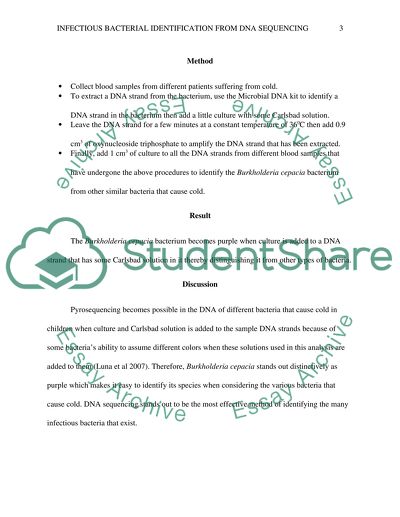Lab 4 Infectious Bacterial Identification from DNA Report. Retrieved from https://studentshare.org/biology/1656590-lab-4-infectious-bacterial-identification-from-dna
Lab 4 Infectious Bacterial Identification from DNA Report. https://studentshare.org/biology/1656590-lab-4-infectious-bacterial-identification-from-dna.


